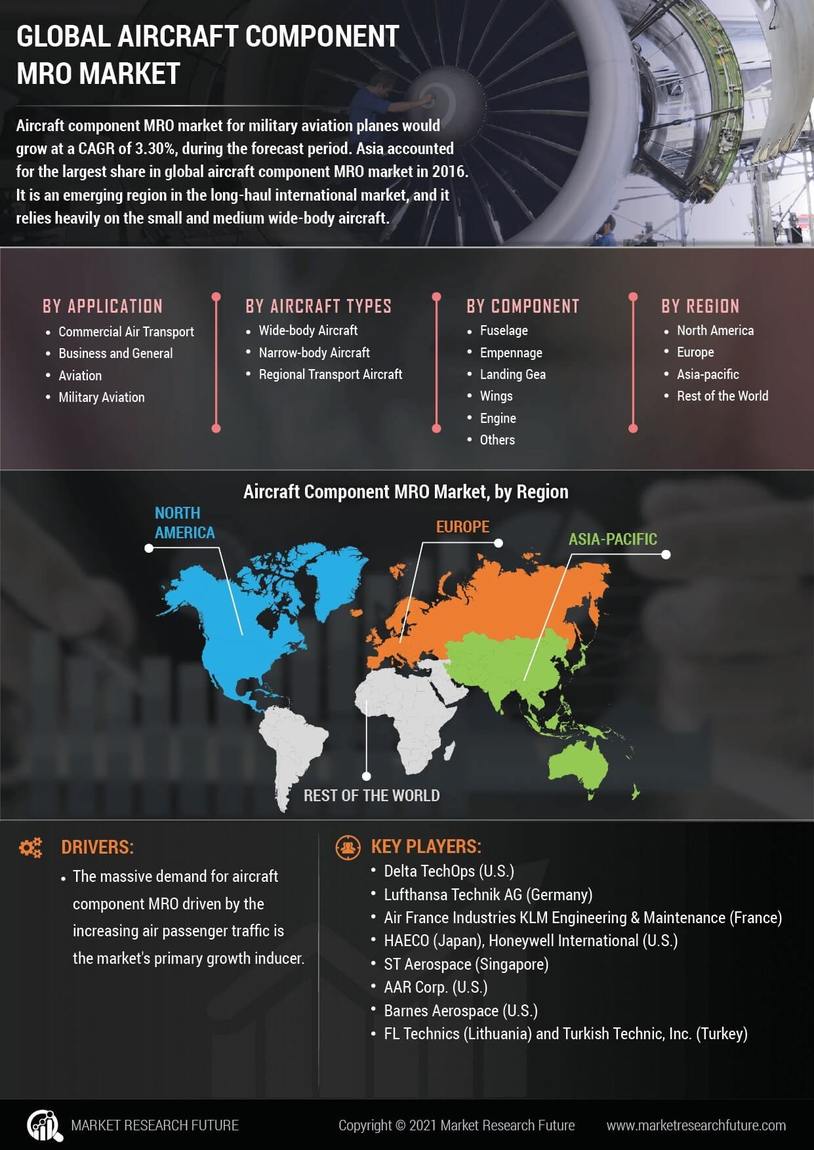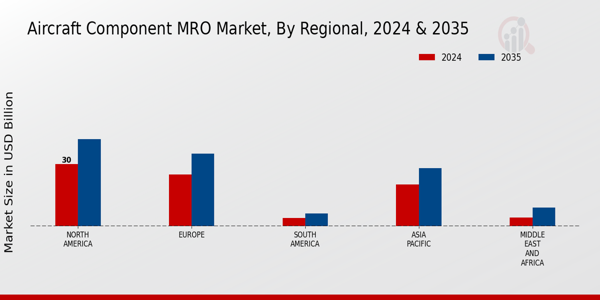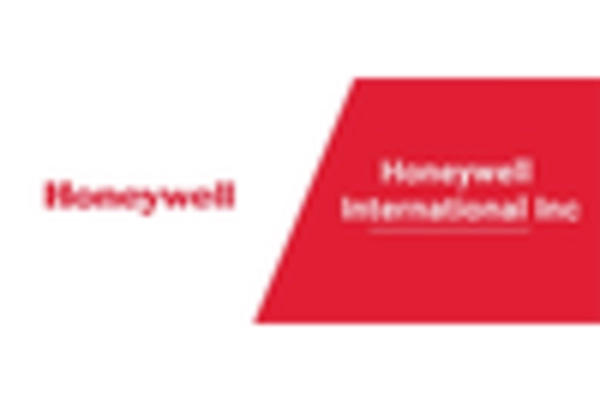Increasing Air Traffic Demand
The Aircraft Component MRO Market is experiencing a surge in demand due to the increasing air traffic worldwide. As more airlines expand their fleets to accommodate rising passenger numbers, the need for maintenance, repair, and overhaul services becomes paramount. According to recent data, air traffic is projected to grow at an annual rate of approximately 4.5 percent over the next decade. This growth necessitates a robust MRO framework to ensure aircraft safety and reliability. Consequently, MRO providers are likely to invest in advanced technologies and skilled workforce to meet the escalating demand. The interplay between rising air traffic and the need for efficient MRO services suggests a promising outlook for the Aircraft Component MRO Market.
Growing Focus on Sustainability
The Aircraft Component MRO Market is increasingly aligning with sustainability initiatives as environmental concerns gain prominence. Airlines are under pressure to reduce their carbon footprints, prompting MRO providers to adopt eco-friendly practices. This includes the use of sustainable materials in repairs and the implementation of waste reduction strategies. Additionally, regulatory bodies are incentivizing MRO providers to enhance their sustainability efforts through various programs. The shift towards greener operations not only meets regulatory requirements but also appeals to environmentally conscious consumers. As sustainability becomes a core focus, the Aircraft Component MRO Market is likely to evolve, presenting new opportunities for innovation and growth.
Expansion of the Aviation Sector
The expansion of the aviation sector is a critical driver for the Aircraft Component MRO Market. Emerging markets are witnessing a rapid increase in air travel, leading to the establishment of new airlines and the expansion of existing fleets. This growth is accompanied by a corresponding rise in demand for MRO services, as new aircraft require regular maintenance to ensure operational efficiency. Furthermore, the establishment of new airports and aviation infrastructure in developing regions enhances accessibility and connectivity, further stimulating the need for MRO services. The expansion of the aviation sector indicates a robust future for the Aircraft Component MRO Market, as it adapts to meet the needs of a growing customer base.
Regulatory Compliance and Safety Standards
The Aircraft Component MRO Market is significantly influenced by stringent regulatory compliance and safety standards imposed by aviation authorities. These regulations are designed to ensure the safety and airworthiness of aircraft, compelling operators to adhere to rigorous maintenance schedules. As a result, MRO providers must continuously update their practices to align with evolving regulations. The Federal Aviation Administration (FAA) and the European Union Aviation Safety Agency (EASA) have established comprehensive guidelines that MRO providers must follow. This regulatory landscape not only drives demand for MRO services but also encourages innovation within the industry. The necessity for compliance indicates a sustained growth trajectory for the Aircraft Component MRO Market.
Technological Innovations in Maintenance Practices
Technological innovations are reshaping the Aircraft Component MRO Market, enhancing efficiency and reducing turnaround times. The integration of predictive maintenance technologies, such as data analytics and artificial intelligence, allows MRO providers to anticipate component failures before they occur. This proactive approach minimizes downtime and optimizes maintenance schedules. Furthermore, the adoption of advanced materials and repair techniques contributes to longer component lifespans, thereby reducing overall maintenance costs. As airlines increasingly seek to leverage these technologies, the Aircraft Component MRO Market is likely to witness a transformation in service delivery models, fostering a competitive environment among MRO providers.


















Leave a Comment